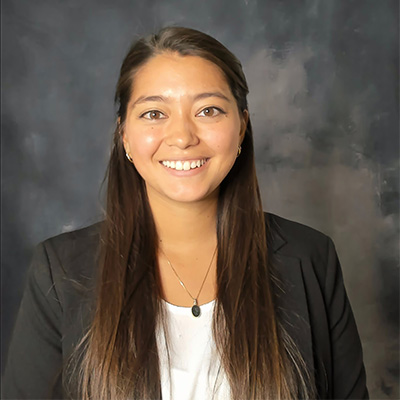 Occupation
Occupation
Public Health Advisor, U.S. Centers for Disease Control (CDC) and Prevention
Describe your career path after graduation?
After graduation, I pursued a Master of Public Health in Environmental Health Sciences at the Yale School of Public Health. Upon graduation I spent a few months working with the San Antonio Botanical Gardens in environmental education. While working on my Master’s degree, I interned with the WHO/PAHO (World Health Organization/Pan American Health Organization) in their health emergencies department. I conducted health geography research specific to foodborne disease outbreaks in Latin America.
Additionally, I worked with the Yale School of Public Health as a student sustainability leader and part of their Climate Change and Health Initiative. Following my Master’s degree, I interned with the City and County of Honolulu in their Office of Climate Change, Sustainability and Resiliency focusing on food systems and waste reduction.
I currently work for the CDC in Saipan in the Commonwealth of the Northern Mariana Islands (CNMI). I work on health geography centered around non-communicable diseases, locating areas of greatest need and how the environment influences health outcomes. Since February, I have been working on our local COVID-19 response as the lead GIS analyst.
How did the Environmental Studies program influence your career?
The Environmental Studies program was integral in shaping my career. My first environmental course was ENV222 with Professor Ing, which I took as an elective. This course was a turning point in my academic journey. I always knew I was interested in the world around us and how it impacts our health, yet learning from Professor Ing helped me hone in on my interests. My courses were the foundation for my knowledge in environment and provided me with the skillset needed to succeed academically and professionally. I was able to study various aspects of the environment, from chemistry to wildlife conservation to health.
How and why did you choose this career?
I have always had a keen interest in public health. I believed strongly in the large-scale impacts population health interventions can support and in working to address aspects of society that impact health. Taking ENV222 was an eye-opening experience as I realized the inherent connection between population health outcomes and the environment. I became interested in how the health of humans was intertwined with the health of the planet, specifically regarding environmental justice and climate justice. While in my Master’s program, I worked with geographic information systems (GIS) and came to appreciate the way GIS mapping assists with data presentation as a tangible product for individuals to see how environment impacts our health. This feeds directly into my work in the CNMI with analyzing environmental connections to chronic diseases. In the future, I plan on pursuing a Juris Doctorate (JD) in Environmental Law, focusing on environmental justice and climate justice drawing from my experiences with health research and working with Pacific Island communities.
Do you have a favourite memory from your time at the School?
I truly loved my courses at the School of Environment, but some of my favourite memories were with the Environmental Students’ Union. I was an ENSU representative in my third and fourth years. Spending time with my classmates to plan various events and getting to know the students and faculty in the program were highlights of my undergraduate experience.
What types of experiences are essential?
Finding ways to engage with the community outside of the classroom were essential for me. One of the ways I did this was through the Professional Experience Course. My placement with Evergreen Brick Works was also a gateway for me to work with other environmental organizations and non-profits in Canada and the US. These experiences also allowed me to realize both the translation and implementation of our classroom teachings in a real-life setting.


